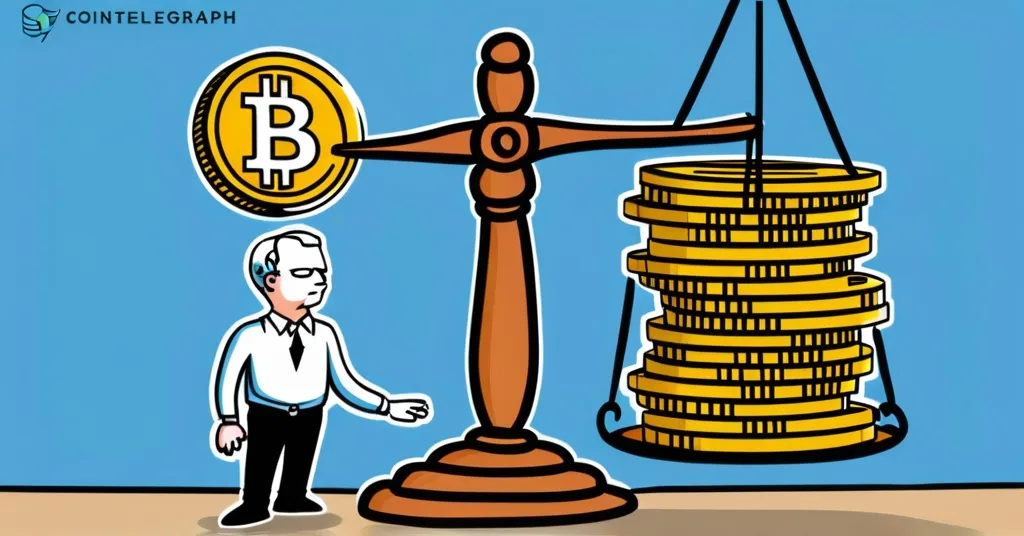SEC Downsizes Crypto Unit: Trump’s Push for Digital Asset Growth Sparks Debate

SEC Downsizes Crypto Unit Amid Trump’s Push for Digital Asset Growth
The U.S. Securities and Exchange Commission (SEC) is scaling back its Crypto Assets and Cyber Unit, aligning with the Trump administration’s efforts to reduce regulatory oversight and promote innovation in the cryptocurrency sector. This move follows new policies requiring commissioner approval for investigations and an executive order focused on stablecoins and a potential digital asset reserve. Commissioner Hester Peirce leads a task force to clarify digital asset regulations, sparking debates on investor protection versus market growth.
- SEC downsizes Crypto Assets and Cyber Unit
- New policies require commissioner approval for probes
- Trump’s order emphasizes stablecoins and digital asset reserve
- Hester Peirce heads task force to streamline crypto regulations
Under the Trump administration, the SEC is undergoing a significant transformation by downsizing its Crypto Assets and Cyber Unit, which once boasted over 50 lawyers and staff during Gary Gensler’s tenure. This unit, tasked with policing the burgeoning crypto market, is now seeing its members reassigned to other departments, signaling a shift towards a lighter regulatory touch aimed at fostering crypto growth.
New SEC policies mandate that enforcement staff obtain commissioner approval before launching formal investigations. This change is designed to ensure actions are supported by clear evidence, potentially leading to more measured responses to market issues. However, critics worry that this could result in delays in addressing fraud, leaving investors vulnerable in a fast-paced market.
President Trump’s recent executive order is a clear indicator of the administration’s intent to bolster the crypto industry. The order emphasizes the development of dollar-backed stablecoins, which are cryptocurrencies designed to minimize price volatility, while explicitly prohibiting central bank digital currencies (CBDCs). It also proposes the formation of a national digital asset reserve, akin to a government-held stockpile of major cryptocurrencies like Bitcoin and Ethereum, to provide a strategic reserve similar to those for other commodities.
Acting SEC Chair Mark Uyeda has appointed Commissioner Hester Peirce to spearhead a task force dedicated to reviewing and clarifying digital asset regulations. Peirce, known for her critique of the SEC’s past approach as “legal imprecision and commercial impracticality,” aims to simplify the regulatory process and provide clarity on the security status of digital assets. Her leadership is viewed as a step towards creating a more balanced regulatory environment that supports both innovation and investor protection.
The restructuring has elicited a spectrum of reactions within the crypto community. Some celebrate the changes as a step towards fostering innovation, aligning with the administration’s deregulatory stance. Others, like Corey Frayer, former senior advisor to Gensler, are less enthusiastic. Frayer argues that the downsizing removes necessary “speed limits and guardrails” from the market, potentially jeopardizing investor protections.
“The restructuring is part of efforts to promote crypto growth and reduce regulatory oversight.”
“The change aims to ensure more measured and evidence-backed investigations but raises concerns about potential delays in addressing fraud.”
“Peirce has criticized the SEC’s previous approach, describing it as ‘legal imprecision and commercial impracticality.'”
“Corey Frayer, former senior advisor to Gensler on crypto issues, criticized the decision, arguing that it removes necessary ‘speed limits and guardrails’ from the market.”
Amidst these shifts, ongoing legal battles such as the SEC’s lawsuit against Coinbase add complexity to the evolving regulatory landscape. The downsizing and new policies could influence how such cases are pursued, highlighting the ongoing tension between regulatory enforcement and market growth.
The Trump administration’s approach reflects a broader trend of deregulation in the financial sector, aiming to position the U.S. as a leader in the global crypto market. By focusing on stablecoins and a digital asset reserve, the administration seeks to enhance the global reach of the US dollar while fostering domestic innovation. This “crypto-friendly diet” of cutting back regulatory calories is meant to fuel growth, though it risks leaving investors hanging in the lurch if fraud isn’t swiftly addressed.
As the SEC’s Crypto Assets and Cyber Unit undergoes this transformation, the crypto community must navigate the delicate balance between market expansion and investor security. Hester Peirce’s task force offers hope for clearer regulations, but the path forward remains uncertain. In this new era for digital assets, the industry must adapt to these changes while advocating for policies that support both innovation and security.
Key Takeaways and Questions
-
What prompted the SEC to downsize its Crypto Assets and Cyber Unit?
The downsizing aligns with the Trump administration’s efforts to reduce regulatory oversight and promote growth in the crypto industry.
-
How does the new SEC policy affect the initiation of investigations?
The new policy requires SEC staff to obtain commissioner approval before starting formal investigations, aiming for more measured and evidence-backed actions.
-
What are the main focuses of President Trump’s executive order on digital assets?
The order focuses on fostering innovation, developing dollar-backed stablecoins, prohibiting CBDCs, and considering the establishment of a national digital asset reserve.
-
Who is leading the SEC’s task force on digital asset regulations?
Commissioner Hester Peirce is leading the task force, aiming to clarify the security status of digital assets and simplify regulatory processes.
-
What are the concerns raised by the downsizing of the SEC’s Crypto Assets and Cyber Unit?
Concerns include potential delays in addressing fraud and the reduction of necessary investor protections in the crypto market.



